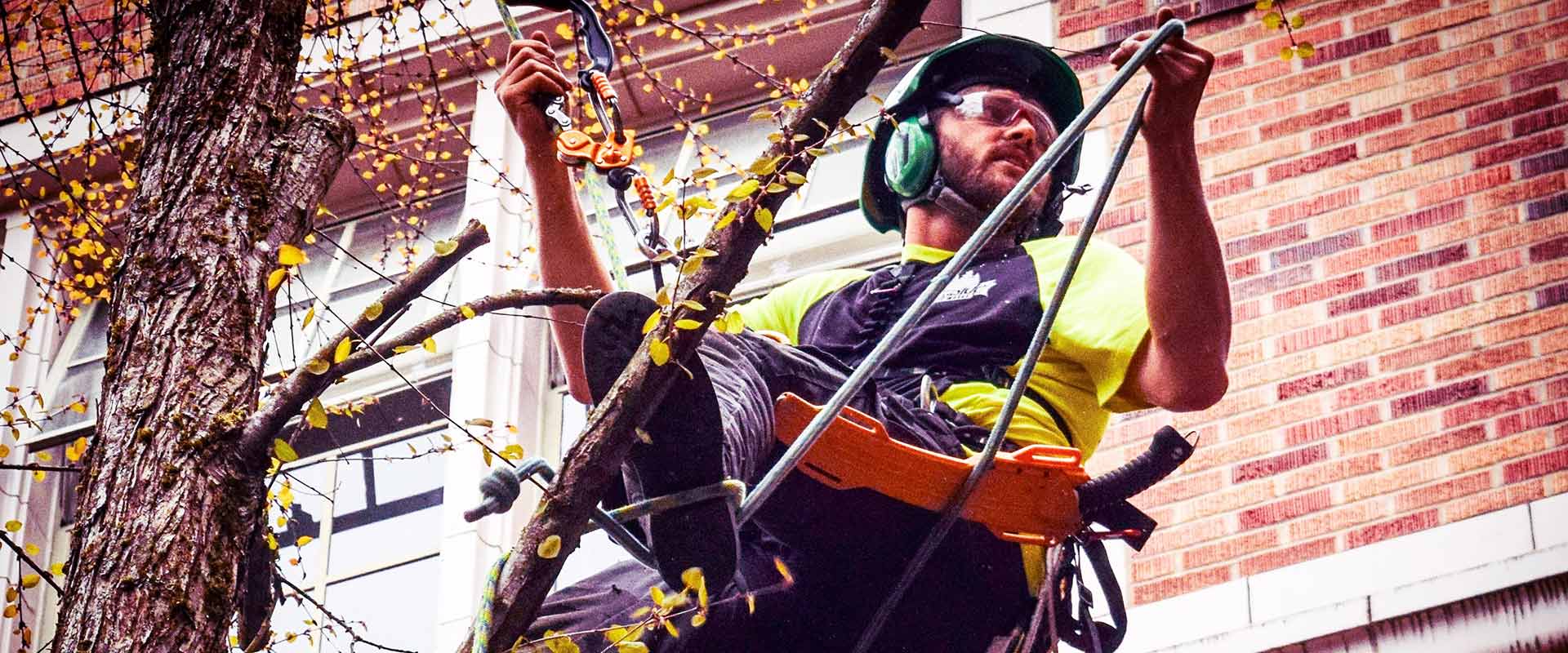Topping trees is generally an outdated practice that can often times cause more harm than good. Because of the way trees heal their wounds, you create a situation where the wood then becomes exponentially more susceptible to a variety of structural and fungal ailments.
Topping is the process of removing the top portion of the tree, either for view clearing, line clearance, building clearance, or other cosmetic or safety purpose.
Why topping is a bad idea
When you top a tree, you leave a large wound at the top. Because trees do not heal in the conventional sense (they compartmentalize – meaning that they put on new wood to try and wall-off the exposed area, which can take years to complete), you end up putting the wound in a compromised state due to the quick onset of decay.
Effects of topping
After the tree is topped, you are left with a compromised piece of wood, which is susceptible to failure and decay – and located at the top of the tree, which takes the brunt of heavier winds.
Either the remaining branches at the new top begin to grow upwards towards the sun, become several tops, or the tree sprouts out multiple suckers that grow rapidly upwards.
What you end up with are multiple epicormic (lacking a branch collar, which is a vital part of branch strength) tops growing out of the now-compromised trunk.
It is important to note that topping trees is either a temporary fix, or a last resort – but in the long run you are going to end up with a larger tree (not smaller, as topping is typically intended).
Tree info related to topping
A general rule of thumb is; the faster a tree grows, the weaker the wood is. A good example of this, is the difference between a strong, slow growing Oak tree, as opposed to a fast growing, and weak Cottonwood tree.
The same concept occurs in individual branches, regardless of species. Fast growth in a tree is weak growth, and trees put wood on at a much faster rate once they have been topped.
There are some situations where topping can make sense for certain trees and situations, as no two trees are the same. Take fruit trees for instance – sometimes it is important to keep small trees contained when there are no safety concerns.
But when dealing with large, heavy mature trees, it can be detrimental and even a terminal diagnosis for tree health and safety.
Is topping ever acceptable?
Another example of potentially acceptable topping, is if you have a tree which is in striking distance of your home or property. If there is nothing to harm closer to the tree, we can remove the lower limbs and upper portion of the tree – leaving a habitat snag for the birds and wildlife to enjoy.
If there is a tree in the way of your view and there are no potential hazards near the trees – then removing the top can greatly enhance your view, and the tree will still provide all of its positive functions (as a wildlife habitat, oxygen production, privacy barrier, etc.).
Topping a tree which has already been topped in the past – to remove new unstable growth and take it back to the old topping cuts – is a responsible method of keeping a tree safe, despite a prior pruning method that put it in a compromising position.
Use arborist for best results
When view issues are a concern, it is always better to have an arborist prune young trees to maintain their size in a safe way. This can be done by selectively removing the longest branches to their lower laterals – which keeps the tree small, safe, and aesthetically pleasing.
This is completed by making smaller cuts over time – as opposed to removing a large piece of the top on a mature, established tree.
Better alternatives to topping trees
On large, tall conifers – windowing is often a great alternative to topping as well. This is the process in which some of the limbs in the middle of the tree are removed to open a “window” for your view. If done in moderation, this has little-to-no effect on the stability and health of the tree.
When in doubt, it is always best to get a Certified Arborist out to take a look at your trees and evaluate the safety implications of any pruning work. A good arborist can achieve your goals in a responsible way, by putting together a plan that will not compromise the health and safety of your valuable trees.

